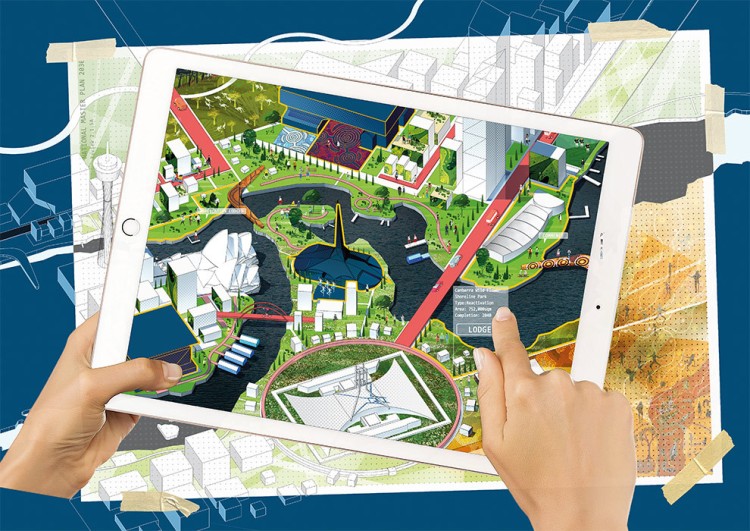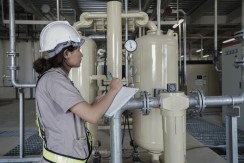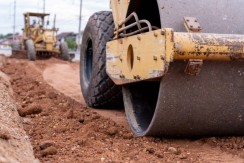
Australia is the world's sixth-largest country in the southern hemisphere, encompassing many ecosystems, from pristine beaches and tropical rainforests to arid deserts and stunning mountain ranges. Australia's unique environment and diverse cultural heritage provide a captivating backdrop for master planning. This article will explore the process of evaluating sites and structures for a master plan, specifically in Australia, highlighting the country's distinct characteristics and considerations. By understanding the specificities of the Australian context, individuals can gain valuable insights into creating sustainable, functional, and visually appealing spaces that align with Australia's unique environment and culture. People interested in learning more can check the availability of interior design courses in Australia, that gives people a chance to enhance their knowledge and skills in creating inspiring and innovative spaces.
Assessing Site Characteristics:
Before diving into the planning process, it is essential to assess the site's characteristics thoroughly. This includes evaluating the topography, soil conditions, drainage patterns, and natural features. Understanding these aspects helps identify potential challenges and opportunities for development. Hilly terrain may require innovative grading techniques, while the presence of a river or lake can be leveraged to create attractive waterfront amenities. By carefully evaluating the site's characteristics, developers can maximize its potential while respecting its natural attributes.
Analyzing Existing Structures:
Evaluating the existing structures on the site is a crucial step in the master planning process. It involves assessing buildings' and infrastructure's condition, functionality, and historical significance. Some structures may be suitable for preservation or renovation, contributing to the site's character and heritage. Others may require demolition or repurposing to align with the overall vision of the master plan. Balancing preserving historical value with the need for modernization is a delicate task, requiring thoughtful consideration and expertise.
Infrastructure Assessment:
An efficient and well-designed infrastructure system is essential for any successful master plan. This includes evaluating the existing utilities, transportation networks, and public amenities. The assessment involves analyzing these systems' capacity, condition, and connectivity. Is the road network adequate to handle anticipated traffic? Are the utilities capable of supporting the proposed development? Understanding the infrastructure's strengths and weaknesses enables planners to address potential bottlenecks, improve connectivity, and ensure the smooth functioning of the site.
Environmental Impact Assessment:
Sustainability is a key consideration in modern master planning. Evaluating the impact of a proposed development is essential to minimize negative consequences and ensure the long-term health of the ecosystem. This assessment involves studying the site's ecological features, conducting studies on air and water quality, and considering energy efficiency measures. By adopting environmentally friendly practices and incorporating green spaces, developers can create a harmonious balance between development and nature, benefiting both the environment and future occupants.
Market Analysis:
Understanding the market dynamics and demand is crucial for a successful master plan. Market analysis involves evaluating the surrounding area's demographics, economic factors, and market trends. This assessment helps identify the target audience, determine the appropriate mix of residential, commercial, and recreational spaces, and ensure the project's viability. By aligning the master plan with market demand, developers can create a vibrant and sustainable community that meets the needs of its future residents and businesses.
Zoning and Regulatory Compliance:
Compliance with zoning regulations and other legal requirements is critical to evaluating site and structures. This involves understanding the local zoning ordinances, building codes, and land-use restrictions. It is crucial to assess whether the proposed development aligns with these regulations and obtain the necessary permits and approvals. Ensuring compliance from the outset helps developers avoid potential setbacks, legal disputes, and costly delays.
Stakeholder Engagement:
Engaging with stakeholders is an essential part of the evaluation process. This includes consulting with residents, community organizations, and government agencies. Their input and feedback provide valuable insights into the site's unique needs and aspirations. By fostering collaboration and incorporating diverse perspectives, developers can create a master plan that meets the stakeholders' expectations and contributes to the community's social fabric and well-being.
Feasibility Study:
A comprehensive feasibility study is crucial to evaluate the economic viability of a master plan. This assessment involves analyzing the project's financial aspects, such as construction costs, potential revenue streams, and return on investment. It helps determine the project's profitability and assess the risks and challenges associated with its implementation. Conducting a thorough feasibility study enables developers to make informed decisions and ensure the long-term financial sustainability of the project.
Conceptual Design:
Based on the evaluations and assessments conducted, the final step is to create a conceptual design that translates the vision into a tangible plan. This involves integrating the evaluation findings into a cohesive layout, incorporating land use patterns, circulation systems, green spaces, and architectural guidelines. The conceptual design serves as the blueprint for subsequent design phases, guiding the development process and ensuring a cohesive and well-executed master plan.
Conclusion:
By embracing the principles of site evaluation and master planning and leveraging the available interior design courses, Australia can continue to thrive with vibrant, sustainable, and well-designed communities that celebrate its unique spirit and embrace its diverse cultural heritage. Furthermore, for individuals interested in pursuing a career in interior design, numerous interior design courses in Australia provide the necessary knowledge and skills to create aesthetically pleasing and functional spaces. Evaluating sites and structures for a master plan in Australia requires a nuanced understanding of the country's diverse landscapes, cultural heritage, and commitment to sustainable development. By carefully assessing site characteristics, analyzing existing structures, evaluating infrastructure and environmental impact, conducting market analysis, navigating zoning and regulatory compliance, engaging stakeholders, conducting feasibility studies, and creating a conceptual design, developers can create master plans that harmonize with Australia's natural beauty, cater to market demand, and foster sustainable growth.










Author
Homesgofast com
Homesgofast.com is an international real estate portal and news source for Google news. Publishing international real estate, finance, homes and travel-related news and blogs for a targeted audience since 2002. Each news item is circulated to thousands of potential readers each day and is also available to the millions of people who sign up for Google news alerts. Find homes offered for sale and to rent direct from owners and some of the best real estate agents from over 35 countries